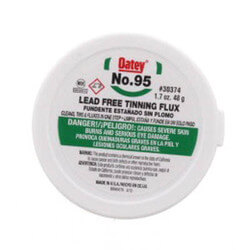

Besides, it can easily clean the surface of metals to avoid corrosion and doesn’t pile up its residue. There are various uses of tinning flux, but you can solder some important metals, including iron, zinc, brass, and copper. However, this paste sometimes constitutes lead for certain applications. Moreover, the paste comprises particular flux metals, tin, ammonium chloride, bismuth, and copper. What are the disadvantages of paste flux?Ī usually tinning flux has a greasy texture, and its color is greenish-gray.In this segment, we will learn tinning flux vs. Similarly, some people use paste flux for other applications due to its different characteristics than tanning flux. Further, tinning flux is excellent for use in pipe welding that’s why plumbers prefer it.

They have similar mechanisms but have a lot of disparities as well. Two of the essential welding fluxes accessible are tanning flux and paste flux. Besides, various welding fluxes are available in the market that you can buy as per the metal type you have to weld. In this way, the welding flux prevents the weld from coming into contact with the air, protecting it from corrosion. Generally, a welding flux is an ingredient that protects welds from oxidation by forming a layer on top when the procedure begins. That’s why flux is there for this purpose. However, various tasks require other welding techniques that do not use shielding gases to protect the welds. MIG welding is the most popular and easiest welding process that uses inert shielding gases to protect joints. That is why it is necessary to cope with the environmental contamination of welds to achieve a sustainable project. Thus, the welds will not be strong and stable. If it happens then, these impurities diminish the resistance of weld against corrosion. Thus, during and after weld creation, there is a huge potential for the molten weld to form oxides, nitrides, or sulfides over the surface due to the presence of various gases in the air. In the welding process, the filling agent and base metals melt to form joints.


 0 kommentar(er)
0 kommentar(er)
